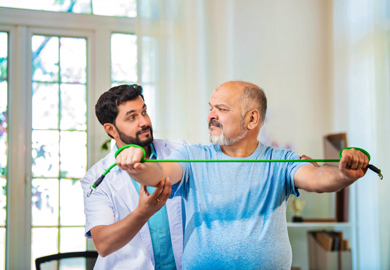You should seek medical help if you experience:
- Persistent pain or cramping in your calf or thigh
- Swelling in one or both legs
- Warmth or tenderness in the affected leg
- Skin discoloration, especially redness or bluish tint
- Sudden shortness of breath or chest pain (which could indicate pulmonary embolism)
Early consultation with a vascular surgeon can prevent severe complications and ensure effective treatment.
You should seek medical help if you experience:
- Persistent pain or cramping in your calf or thigh
- Swelling in one or both legs
- Warmth or tenderness in the affected leg
- Skin discoloration, especially redness or bluish tint
- Sudden shortness of breath or chest pain (which could indicate pulmonary embolism)
Early consultation with a vascular surgeon can prevent severe complications and ensure effective treatment.






















